It’s your last chance to catch “Ralston Crawford and Jazz” at NOMA. On Friday, Oct. 12, NOMA’s “Where Y’Art?” events include book signings by John McCusker of “Creole Trombone: Kid Ory and the Early Years of Jazz,” music by Eileina Williams with Todd Duke, gallery talks and movie screenings, all from 5-9pm at the New Orleans Museum of Art. Ralston Crawford runs through Sunday, Oct. 14.
I’m going to stay away from any kind of review or criticism of HBO’s “Treme” and there is plenty of that, good and terrible, to go around. I’ll only say the show is deserving of both for different reasons and I’m still watching it.
“Treme” has featured a lot of music and culture which a lot of natives may not be familiar with. Basically, being middle-class suburbanites, the music and culture featured in “Treme” was that of neighborhoods we neither lived in or went to school in. (I grew up in the Aurora area of Algiers and went to school Uptown, for example). We knew it existed by rarely participated other than catching a passing parade, and never saw a Mardi Gras Indian unless it was at Jazz Fest.
The brass and jazz bands and Mardi Gras Indians featured in the “Treme” story lines arose out neighborhoods like the 7th Ward and 9th Ward as well as the Fauborg Tremé. Documenting the musicians and artists, and the people enjoying their work, was Ralston Crawford, who worked in New Orleans during the 1950s, ’60s and ’70s. If you’re a frequent watcher of the show—or otherwise—and still a fan of New Orleans’ “back of town” culture, you’ll be fascinated by Crawford’s photographs. NOMA’s exhibit consists mainly of photos, paintings and drawings from the Sheldon Art Galleries in St. Louis.
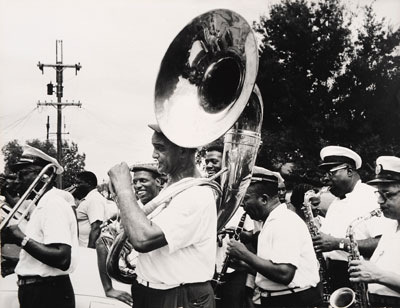
“Brass Band Parade,”by Ralston Crawford. Musicians from left to right are: Bill Matthews, trombone; Wilbert Tillman, sousaphone; John Casimir, b-flat clarinet; Andrew Morgan, tenor saxophone; and far right: Harold Dejan, alto saxophone,” 1950-1960s. Gelatin silver print, (image and paper) 10 ½ x 13 7/16 inches.
Crawford drew and did some lithographs, which are stark compared to his photographs that, for the most part, are populated by musicians and spectators. He was drawn to the city’s cemeteries (and was buried in St. Louis No. 3 in 1978) as is apparent in some of the photos, but his drawings, lithographs and paintings reflect the compositional elements of his subjects, which also apparent in some of the non-portrait photos.
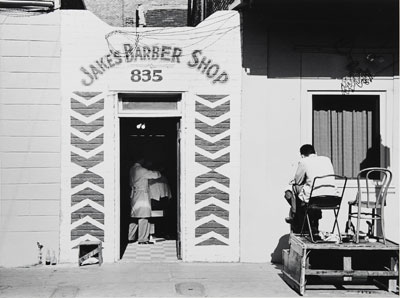
“Jake’s Barber Shop,” ca. 1950-1960s, by Ralston Crawford. Gelatin silver print, (image) 5 ¾ x 8 7/16, inches, (paper) 8 x 10 inches.
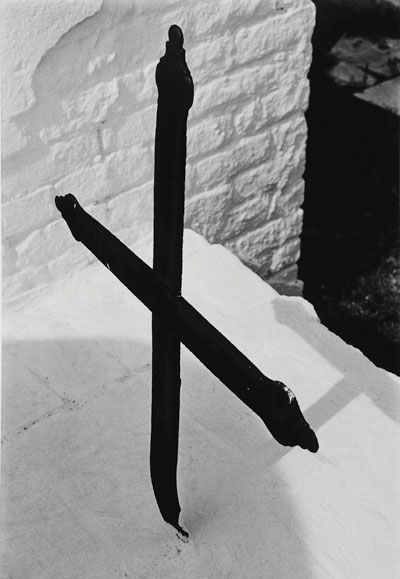
“Basin street,” 1974, by Ralston Crawford. Gelatin silver print, (image) 12 3/8 x 8 ½ inches, (paper) 14 x 11 inches.
I always like trying to get into an artist’s mind and figure out how they might have arrived at an image. With Crawford, it’s not hard to see how he was grabbed by shapes and then compelled to recreate them. Take the photo above, and painting, below.
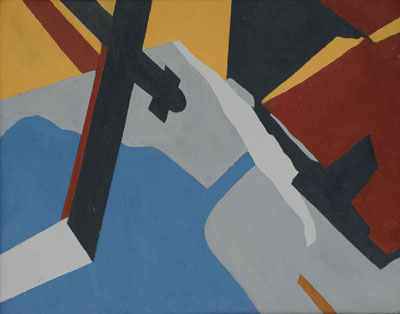
“Basin Street Cemetery,” 1975, by Ralston Crawford. Oil on linen, 17 x 21 inches.
He did similar things with street scenes and other cemetery scenes.
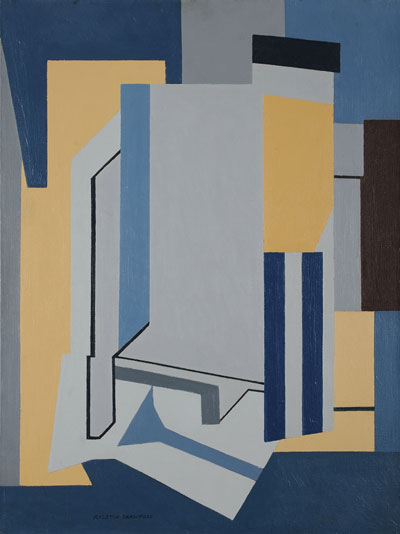
“St. Anne Street,” by Ralston Crawford, 1954. Oil on canvas, 24 x 18 inches.
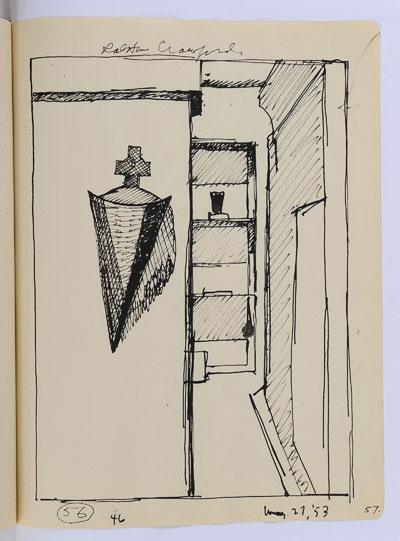
“New Orleans Cemetery,” by Ralston Crawford. 1953. Ink on paper, page from Windsor & Newton notebook (paper) 7 ¾ x 10 1/8 inches.
His documentation of the African-American music scene in New Orleans is boundless and should be viewed by any fan of New Orleans music, no matter what the era.Venues like the Dew Drop Inn were hot their heyday but long gone. If nothing else ever comes out of HBO’s “Treme,” it will have at least given a boost to the musicians—Kermit Ruffins, Trombone Shorty, Irvin Mayfield, Dr Michael White and so many more—who follow in the footsteps of Crawford’s subjects. Part of the work in the NOMA exhibit are photographs from the Tulane archives. You can read more about Crawford and browse Tulane’s collection of his photos here.
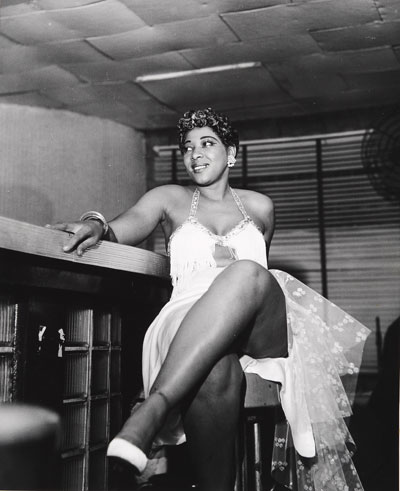
“Dancer at the Dew Drop Inn, La Salle Street, New Orleans,” 1952, by Ralston Crawford. Gelatin silver print, (image) 9 ½ x 7 11/16 inches, (paper) 9 7/8 x 8 inches.
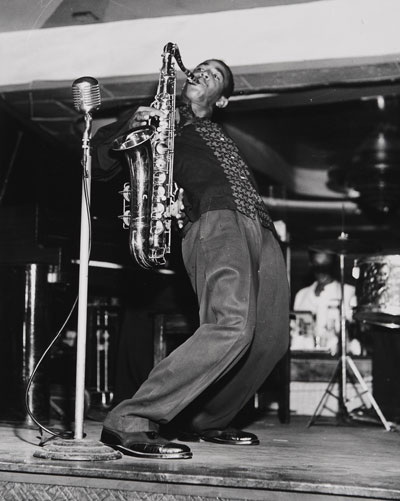
“Joe Tillman, tenor saxophone, at the Dew Drop Inn,” 1952, by Ralston Crawford. Gelatin silver print, (image) 9 ½ x 7 5/8 inches, (paper) 10 x 8 inches.
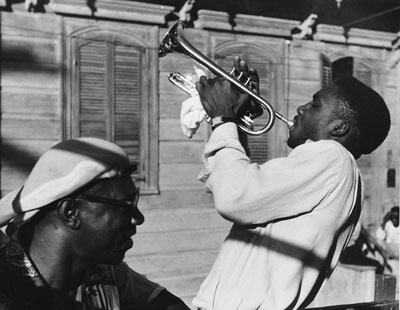
“Advertising the Dance,” by Ralston Crawford. 1953. Gelatin silver print, (image) 7 ½ x 9 ½ inches, (paper) 8 x 10 inches.
For all these pictures and many, many, more, I invite you to visit NOMA this weekend and get yourself lost in the world that made “Treme.
